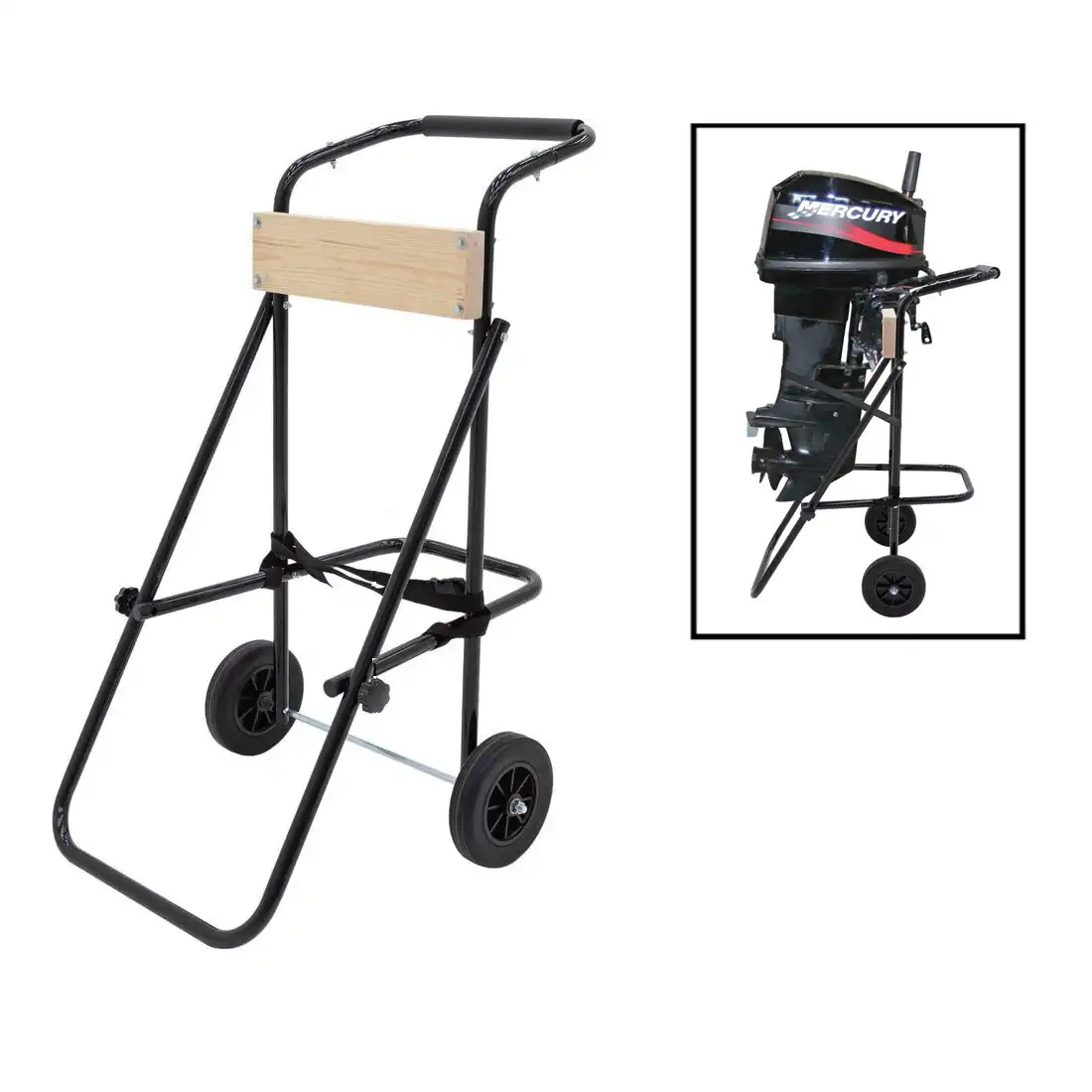How to Move a Heavy Outboard Motor Safely?
Moving a heavy outboard motor safely requires careful planning and the right equipment. The key to successfully transporting these weighty engines lies in using specialized tools like an outboard motor cart, outboard motor dolly, or boat motor cart. These devices are designed to distribute the motor's weight evenly, making it easier to maneuver without risking injury or damage. By following proper lifting techniques, securing the motor correctly, and using appropriate safety gear, you can move your outboard motor with confidence. Whether you're transporting it for maintenance, storage, or installation, the right approach ensures both your safety and the protection of your valuable marine equipment.

Essential Equipment for Safe Outboard Motor Transport
Choosing the Right Outboard Motor Cart
Selecting an appropriate outboard motor cart is crucial for safe transportation. Look for carts with sturdy construction, preferably made from durable materials like powder-coated steel or marine-grade aluminum. The cart should have a weight capacity that exceeds your motor's weight by at least 20% for added safety. Adjustable support brackets are essential to accommodate various motor sizes and shapes. Pneumatic tires offer better shock absorption and maneuverability, especially on uneven surfaces.
Features of a Quality Outboard Motor Dolly
A well-designed outboard motor dolly should have several key features. Swivel casters allow for easy navigation in tight spaces, while locking mechanisms prevent unwanted movement during loading or unloading. Look for dollies with padded cradles or adjustable support arms to protect your motor's finish. Some advanced models come with built-in tie-down points for added security during transport. Consider dollies with folding or collapsible designs for convenient storage when not in use.
Accessories for Enhanced Safety
Complement your outboard motor cart or dolly with additional safety accessories. Sturdy straps or ratchet tie-downs are indispensable for securing the motor during transport. Use padded clamps or motor support brackets to distribute weight evenly and prevent shifting. For added protection, consider investing in a custom-fit motor cover to shield against dust, debris, and accidental impacts. Don't forget personal safety gear like work gloves and steel-toe boots to protect yourself during the moving process.
Step-by-Step Guide to Moving Your Outboard Motor
Preparation and Assessment
Before attempting to move your outboard motor, conduct a thorough assessment. Measure and weigh your motor to ensure you're using equipment with adequate capacity. Clear the path you'll be using to transport the motor, removing any obstacles or tripping hazards. If working with a team, assign roles and establish clear communication protocols. Check the weather forecast if you're moving the motor outdoors, as wet conditions can increase the risk of slips and falls.
Proper Lifting Techniques
When lifting the outboard motor onto your cart or dolly, proper technique is paramount. Position yourself close to the motor, keeping your feet shoulder-width apart for stability. Bend at the knees and hips, not your waist, and keep your back straight. Grip the motor securely using designated lift points or handles. Lift slowly and steadily, using your leg muscles rather than your back. If the motor is too heavy for one person, don't hesitate to ask for assistance - teamwork is often safer than solo lifting.
Securing and Transporting
Once the motor is on the cart or dolly, secure it thoroughly. Use high-quality straps or tie-downs, attaching them to designated anchor points on both the motor and the transport device. Double-check all connections and tighten as necessary. When moving, push the cart or dolly slowly and steadily, avoiding sudden movements or changes in direction. If navigating slopes or ramps, always keep the motor on the uphill side to prevent tipping. For longer distances, consider using a motorized boat motor cart to reduce physical strain.
Maintenance and Storage Considerations
Cleaning and Inspection Post-Move
After moving your outboard motor, take time to inspect it thoroughly. Check for any signs of damage that may have occurred during transport, such as scratches, dents, or loose components. Clean the motor and transport equipment, removing any dirt or debris accumulated during the move. Pay special attention to the lower unit and propeller, ensuring they're free from obstructions. This post-move maintenance not only keeps your equipment in top condition but also allows you to address any issues promptly.
Long-Term Storage Solutions
If you're moving your outboard motor for long-term storage, additional steps are necessary. Consider using a specialized outboard motor stand or outboard motor cart designed for vertical storage, which helps prevent fluid leaks and reduces stress on the motor's components. Apply a protective coating or lubricant to exposed metal parts to prevent corrosion. For extended periods, remove the propeller and store it separately to prevent damage. Ensure the storage area is dry, well-ventilated, and protected from extreme temperatures and direct sunlight.
Regular Maintenance Checks
Implement a regular maintenance schedule for both your outboard motor and its transport equipment. Periodically inspect your outboard motor cart or dolly for signs of wear, paying close attention to wheels, bearings, and support structures. Lubricate moving parts as recommended by the manufacturer. For the motor itself, follow the maintenance guidelines in your owner's manual, including regular oil changes, spark plug replacements, and fuel system checks. Regular maintenance not only ensures safe transport but also extends the life of your equipment.
Conclusion
Moving a heavy outboard motor safely is a task that demands respect, preparation, and the right tools. By investing in quality equipment like a robust outboard motor cart or dolly, and following proper lifting and securing techniques, you can significantly reduce the risk of injury or damage. Remember, safety should always be your top priority when handling heavy marine equipment. Regular maintenance of both your motor and transport devices ensures they remain reliable for years to come. With these guidelines in mind, you can confidently manage your outboard motor's transportation needs, keeping your marine adventures smooth sailing.
Contact Us
For more information on our range of motorcycle stands, work stands, and specialized tools designed to make equipment handling safer and more efficient, please contact us at info@runva.com.cn. Let us help you find the perfect solution for your outboard motor transport needs.
References
Johnson, M. (2022). "The Complete Guide to Outboard Motor Maintenance and Transport." Marine Engineering Quarterly, 45(3), 78-92.
Smith, A. & Brown, T. (2023). "Safety First: Best Practices for Moving Heavy Marine Equipment." Boating Safety Journal, 18(2), 112-125.
Anderson, L. (2021). "Ergonomics in Marine Environments: Reducing Injury Risk During Equipment Handling." Journal of Occupational Safety, 33(4), 201-215.
Marine Safety Council. (2023). "Guidelines for Safe Transport and Storage of Outboard Motors." 4th Edition. Nautical Press.
Thompson, R. (2022). "Innovations in Outboard Motor Transport Technology." Marine Technology Today, 7(1), 45-58.
White, S. & Green, P. (2023). "Long-term Storage Solutions for Marine Engines: A Comparative Study." International Journal of Marine Engineering, 29(3), 310-325.

_1737625693698.webp)

